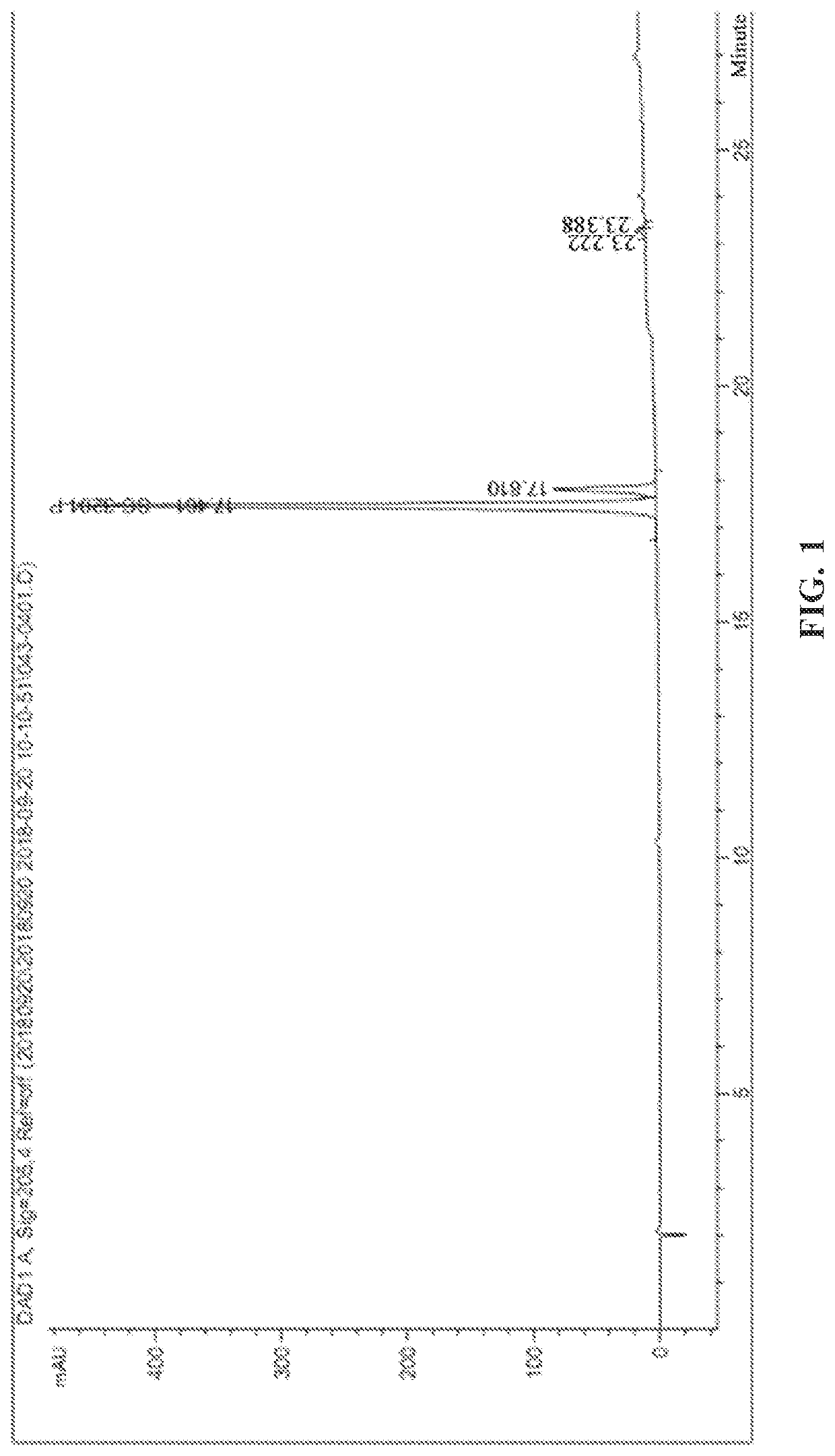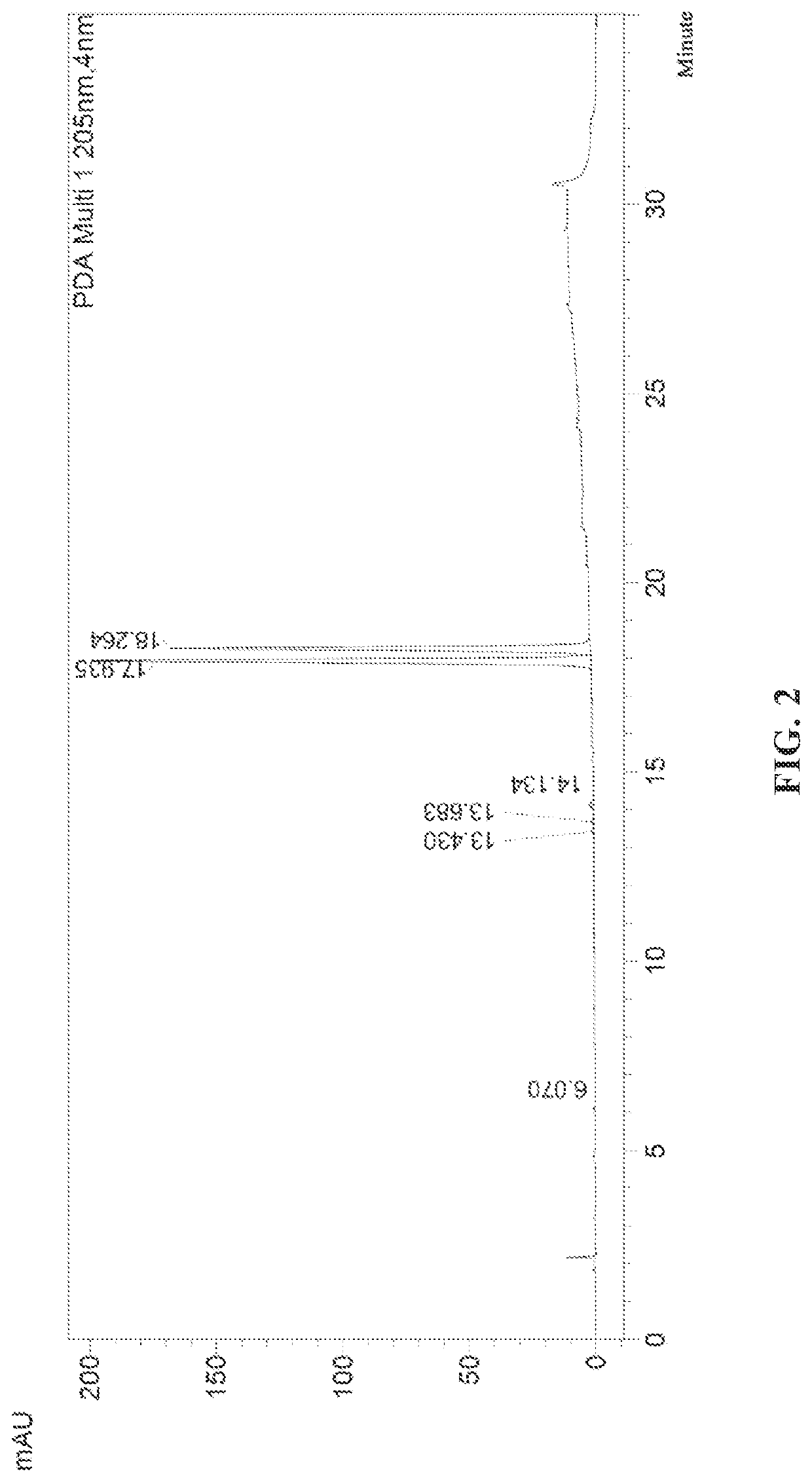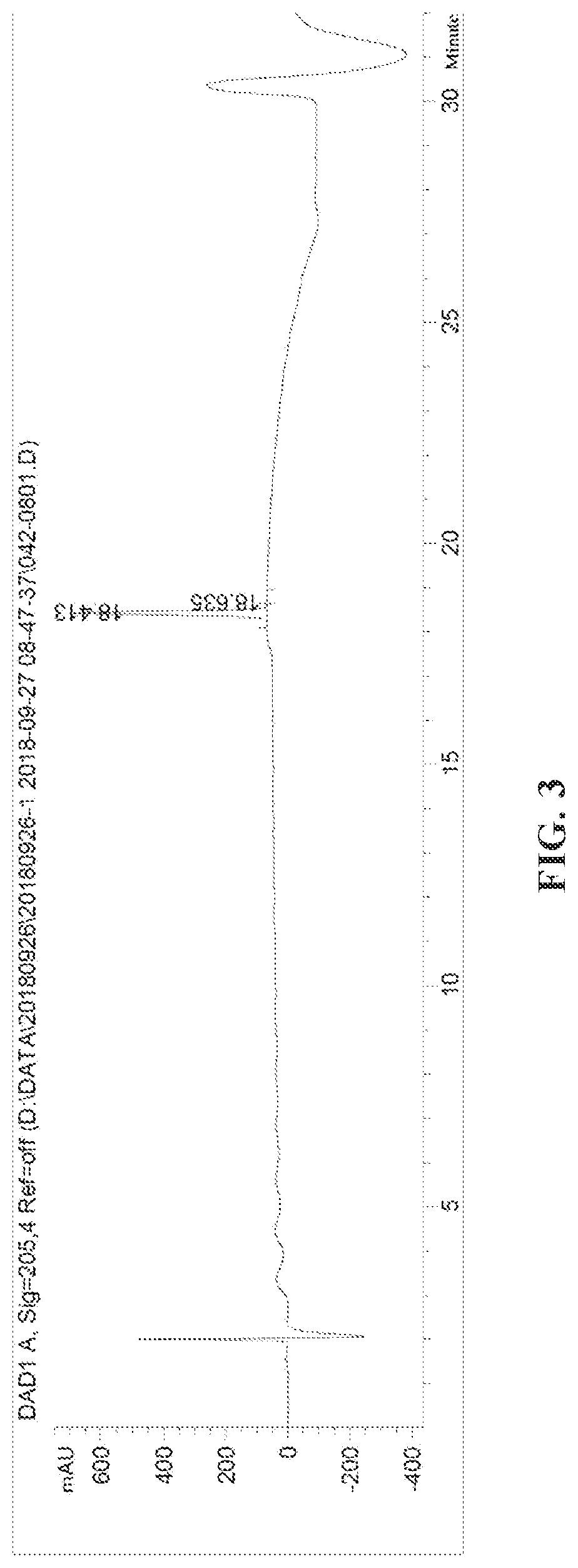Method for preparing brivaracetam and intermediate thereof
a technology of brivaracetam and intermediate thereof, applied in the field of medical technology, can solve the problems of resolution and purification, and the inability to obtain high purity of brivaracetam intermediate represented by b-vi, and achieve the effects of simplifying operation, reducing cost, and shortening preparation tim
- Summary
- Abstract
- Description
- Claims
- Application Information
AI Technical Summary
Benefits of technology
Problems solved by technology
Method used
Image
Examples
example 1
[0070]150 g (S)-2(4-propyl-1,5-dihydropyrrol-2-one)butyric acid (0.71 mol) was added to a 2 L hydrogen autoclave, and then 1.5 L methanol and 1.5 g Pd(OH)2 / C (1%) were added to react for 20 hours under the pressure of 15-20 MPa. After filtration, the filtrate was concentrated and evaporated to remove methanol to obtain 140 g of the solid compound represented by B-P.
[0071]According to the HPLC spectrum, the ratio of the two isomers in the compound represented by B-P was RS:SS=85:15, and the chiral purity was 85%, wherein RS was the isomerization product of RS configuration, i.e., the compound represented by B-R; SS was the isomerization product of SS configuration, i.e., the diastereoisomer of the compound represented by B-R. The HPLC chromatogram is shown in FIG. 1.
example 2
[0072]150 g (S)-2(4-propyl-1,5-dihydropyrrol-2-one)butyric acid (0.71 mol) was added to a 2 L hydrogen autoclave, and then 1.5 L methanol and 45 g palladium on active charcoal (30%) were added to react for 20 hours under the pressure of 15-20 MPa. After filtration, the filtrate was concentrated and evaporated to remove methanol to obtain 145 g of solid compound represented by B-P.
[0073]According to the HPLC spectrum, the ratio of the two isomers in the compound represented by B-P was RS:SS=55:45, and the chiral purity was 55%, wherein RS was the isomerization product of RS configuration, i.e., the compound represented by B-R; and SS was the isomerization product of SS configuration, i.e., the diastereoisomer of the compound represented by B-P. The HPLC chromatogram is shown in FIG. 2.
[0074]Preparation of the Compound Represented by B-Q
example 3
[0075]180 ml isopropyl acetate, 60 g of the compound represented by B-P prepared in Example 1 (0.28 mol, 1.0 eq, containing 15% of isomer) and 59.4 g 1S,2S-diphenylethylenediamine (1.0 eq. 0.28 mol) were added to a 500 ml three-necked flask, heated to about 72° C. until dissolved and clarified, naturally cooled to 20° C.±5° C., stirred for 1 hour, and then vacuum filtered to obtain 60 g of wet product. The wet product was then directly added to 180 ml isopropyl acetate, heated to 72° C. for dissolving, gradually cooled to 20° C. over 1.5 hours, and vacuum filtered to obtain 35.7 g of the compound represented by B-Q, yield: 30%. According to the HPLC spectrum, the chiral purity of the compound represented by B-Q was 99.8%, and the diastereoisomer was 0.2%. The HPLC diagram is shown in FIG. 3.
PUM
| Property | Measurement | Unit |
|---|---|---|
| Temperature | aaaaa | aaaaa |
| Temperature | aaaaa | aaaaa |
| Temperature | aaaaa | aaaaa |
Abstract
Description
Claims
Application Information
 Login to View More
Login to View More - R&D
- Intellectual Property
- Life Sciences
- Materials
- Tech Scout
- Unparalleled Data Quality
- Higher Quality Content
- 60% Fewer Hallucinations
Browse by: Latest US Patents, China's latest patents, Technical Efficacy Thesaurus, Application Domain, Technology Topic, Popular Technical Reports.
© 2025 PatSnap. All rights reserved.Legal|Privacy policy|Modern Slavery Act Transparency Statement|Sitemap|About US| Contact US: help@patsnap.com



